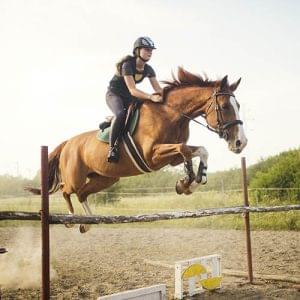Dr. Chris Kawcak is making pioneering advances in equine musculoskeletal disease and injury research. Dr. Kawcak is one of a team of researchers working to find ways to prevent and treat catastrophic injuries in equine athletes, such as the injuries sustained by Barbaro and Eight Belles.
Kawcak works to accomplish these goals through several areas of research. He's looking for ways to diagnose joint disease and microscopic joint injuries before they develop into more serious injuries. Kawcak focuses on finding ways to improve three-dimensional imaging techniques and methods using MRI, CT scan and X-ray.
He is working with researchers in biomedical engineering on biomechanical models that show the joint and how the animal uses a leg, and they've developed a computer simulation of risk factors specific to each horse, such as the shape of the joint and the abnormal stresses that can result in the joint from this. Horses with significant fetlock damage seemed to have abnormally shaped condyles which appears to cause abnormal forces within the joint to predispose the animal to injury. Kawcak hopes that looking at joint shape model can give veterinarians information to determine the chance of a fracture, and help veterinarians and horse owners make the best decisions for the health and well-being of the horse.
Kawcak and the team at the university's Orthopaedic Research Center also are using imaging to understand physiological characteristics that may lead to catastrophic fractures.
Kawcak is also spearheading a collaborative effort to better monitor limb use in equine athletes through wireless technology. By working with a private company, the group is testing an inertial sensor that can be placed on the horse's leg to monitor its limb use in real time, and detect any changes that might lead to lameness. At this stage, the lameness would be in its early stages and treated more effectively.
Other focuses of the research group at the center include:
- Using gene therapy to improve cartilage healing
- looking at the use of stem cell therapy for soft tissue healing
- Testing new medications and therapies
- Studying racetrack surfaces for clues into whether or not specific surfaces cause injuries or help to prevent injuries
- Investigating integrative therapies to improve the field of equine rehabilitation
While work is conducted specifically in the best interest of the horse, similar problems in humans may one day benefit from research and clinical cases at CSU.
Kawcak is also an equine surgeon who focuses mainly on orthopaedic injury and surgery. He is a professor in the Department of Clinical Sciences, College of Veterinary Medicine and Biomedical Sciences. He holds the Iron Ranch Rose Chair.
-
- UT - CERP
- Academic CERP Program
- Earn the CERP credential* after successfully finishing the following parts: Equine I - Online Lecture Series (Included) Equine II - Live hands-on lab (Select a Date) Equine III - Final Examination and Case Presentations (Included) Online courses including the elective can be taken at any time, choose the dates below that you would like to attend the hand-on lab. There…
- $7,995.00
- Read more
